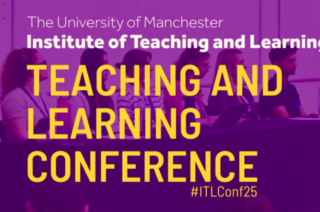Artificial Intelligence and Higher Education

AI has the potential to greatly impact higher education in a number of ways. Some potential benefits include:
- Personalized learning: AI can be used to create personalized learning experiences for students based on their individual needs and abilities.
- Automation of repetitive tasks: AI can automate repetitive tasks such as grading, allowing educators to focus on more important tasks such as providing feedback and mentoring.
- Improved student engagement: AI-powered tools can make learning more interactive and engaging for students.
However, there are also potential downsides to the use of AI in higher education:
- Job displacement: Automation of certain tasks could lead to job displacement for educators and support staff.
- Lack of human interaction: Relying too heavily on AI could lead to a lack of human interaction in the classroom, which is important for student development.
- Bias and fairness concerns: AI systems can perpetuate bias and discrimination if they are not properly designed and monitored.
- Risk to assessment integrity: AI can pose risks to assessment integrity, such as the ability to cheat or the possibility that AI-generated assessment questions could be easily found online.
Therefore, it is important to carefully consider the use of AI in higher education and take steps to mitigate these risks.

It is possible for students to use AI to cheat on assessments. For example, students could use AI-powered tools to generate answers to questions or to write essays. Additionally, some students may use AI-enabled tools to automate the process of taking online assessments.
However, it is important to note that AI-assisted cheating is not a new phenomenon, students have been using technology to cheat for a long time. It is also worth noting that AI systems are not perfect and can make mistakes, for example, a student using AI-generated answers might end up with a low-quality or irrelevant response.
To mitigate the risk of AI-assisted cheating, educational institutions can invest in security measures such as plagiarism detection software and proctoring tools, and also educate students about academic integrity and the consequences of cheating. Additionally, educators should be vigilant and aware of the potential for AI-assisted cheating and take steps to prevent it, such as creating unique and unpredictable assessment questions.
There are several steps that educators and educational institutions can take to mitigate the risks that AI presents:
- Properly design and test AI systems: Before implementing AI systems in the classroom, it is important to ensure that they are properly designed and tested to minimize the risk of bias and discrimination.
- Monitor and evaluate AI systems: Regularly monitoring and evaluating AI systems can help identify and address any issues that arise, such as bias or lack of effectiveness.
- Provide training for educators: Educators should be provided with training on how to use AI systems effectively and how to identify and address potential issues.
- Encourage transparency: Encouraging transparency in the development and use of AI systems can help ensure that they are transparent to students and educators.
- Foster human interaction: While AI systems can automate certain tasks, it is important to ensure that students still have opportunities for human interaction and feedback.
- Invest in security measures: Investing in security measures can help prevent cheating and protect assessment integrity.
- Address ethical issues: Addressing ethical issues related to the use of AI, such as privacy and bias, can help to mitigate the potential negative consequences of AI in education.
- involve students and educators in the decision making process of AI implementation: Involving students and educators in the decision-making process and getting their feedback can help ensure that the AI systems being implemented are meeting their needs and addressing their concerns.
There are several resources available for educators to learn how to use AI to improve their courses and student experiences:
- Professional development courses: Many educational institutions and organizations offer professional development courses on the use of AI in education. These courses can provide educators with the knowledge and skills they need to effectively use AI in the classroom.
- Online tutorials and webinars: There are a variety of online tutorials and webinars available that can help educators learn how to use specific AI-powered tools and technologies.
- Research and publications: There is a growing body of research and publications on the use of AI in education that educators can access to learn more about the potential benefits and challenges of AI.
- Conferences and workshops: Conferences and workshops on the use of AI in education can provide educators with an opportunity to learn from experts and network with other educators who are also interested in using AI in the classroom.
- Educational technology vendors: Many educational technology vendors offer training and support for educators using their products.
- Communities and networks: Joining communities and networks of educators who are interested in using AI in education can provide educators with valuable support, resources and opportunities for collaboration.
It is important for educators to be proactive in seeking out resources and opportunities to learn about AI and its applications in education, as the field is constantly evolving and new solutions are being developed all the time.
If you’ve not already guessed, this post was written by a popular AI ChatBot.
Feel fee to sign up and explore the world of AI with ChatGPT


